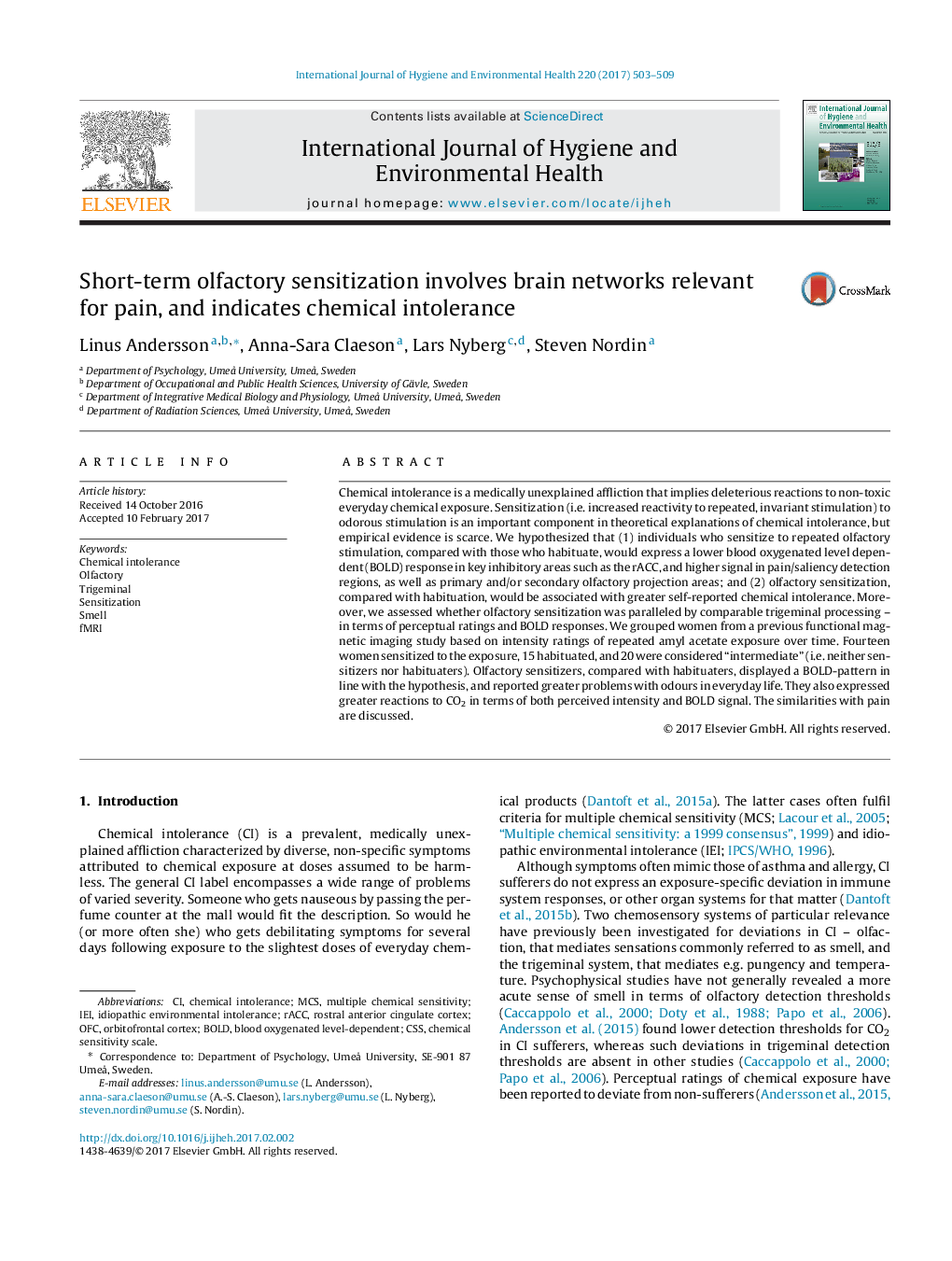| کد مقاله | کد نشریه | سال انتشار | مقاله انگلیسی | نسخه تمام متن |
|---|---|---|---|---|
| 5560513 | 1561875 | 2017 | 7 صفحه PDF | دانلود رایگان |
- A novel way of categorizing chemical intolerance based on sensitization/habituation.
- Behavioral reactions paralleled by functional magnetic resonance imaging.
- Odor sensitization implies lower signal in rostral anterior cingulate cortex.
- Odor sensitization implies higher signal in brain areas including anterior insula.
- Reactions to both olfactory and trigeminal exposure assessed.
Chemical intolerance is a medically unexplained affliction that implies deleterious reactions to non-toxic everyday chemical exposure. Sensitization (i.e. increased reactivity to repeated, invariant stimulation) to odorous stimulation is an important component in theoretical explanations of chemical intolerance, but empirical evidence is scarce. We hypothesized that (1) individuals who sensitize to repeated olfactory stimulation, compared with those who habituate, would express a lower blood oxygenated level dependent (BOLD) response in key inhibitory areas such as the rACC, and higher signal in pain/saliency detection regions, as well as primary and/or secondary olfactory projection areas; and (2) olfactory sensitization, compared with habituation, would be associated with greater self-reported chemical intolerance. Moreover, we assessed whether olfactory sensitization was paralleled by comparable trigeminal processing - in terms of perceptual ratings and BOLD responses. We grouped women from a previous functional magnetic imaging study based on intensity ratings of repeated amyl acetate exposure over time. Fourteen women sensitized to the exposure, 15 habituated, and 20 were considered “intermediate” (i.e. neither sensitizers nor habituaters). Olfactory sensitizers, compared with habituaters, displayed a BOLD-pattern in line with the hypothesis, and reported greater problems with odours in everyday life. They also expressed greater reactions to CO2 in terms of both perceived intensity and BOLD signal. The similarities with pain are discussed.
193
Journal: International Journal of Hygiene and Environmental Health - Volume 220, Issue 2, Part B, April 2017, Pages 503-509
